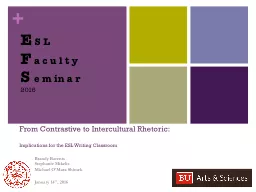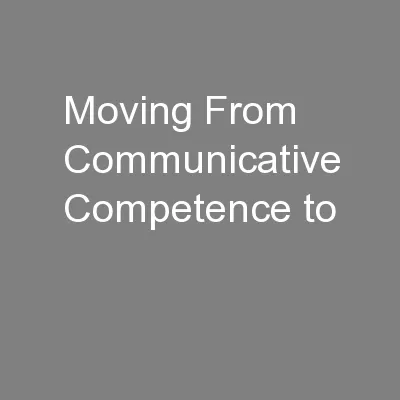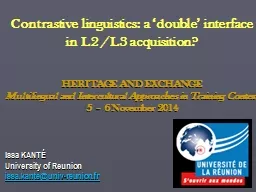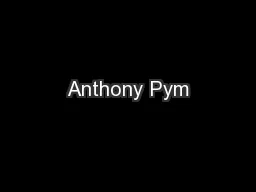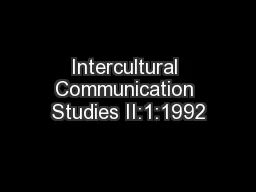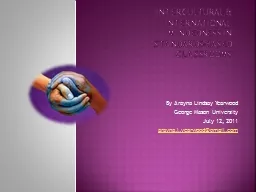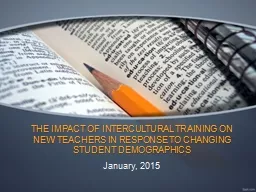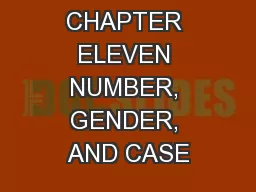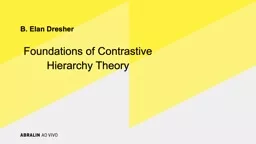PPT-From Contrastive to Intercultural
Author : mitsue-stanley | Published Date : 2017-07-26
R hetoric Implications for the ESL Writing Classroom Brandy Barents Stephanie Mikelis Michael OMara Shimek January 14 th 2016 E S L F a c u l t y S e m in
Presentation Embed Code
Download Presentation
Download Presentation The PPT/PDF document "From Contrastive to Intercultural" is the property of its rightful owner. Permission is granted to download and print the materials on this website for personal, non-commercial use only, and to display it on your personal computer provided you do not modify the materials and that you retain all copyright notices contained in the materials. By downloading content from our website, you accept the terms of this agreement.
From Contrastive to Intercultural: Transcript
Download Rules Of Document
"From Contrastive to Intercultural"The content belongs to its owner. You may download and print it for personal use, without modification, and keep all copyright notices. By downloading, you agree to these terms.
Related Documents

